River Regulation Decreases Genetic Health of a Sensitive Frog, Rana boylii
Ryan Peek
PhD Candidate, Ecology
2018/02/15

Here to tell a story about rivers, and an organism which has evolved within these watersheds and yet what we see today is largely a very different ecosystem than what these species experienced 200+ years ago.
As freshwater systems and biota are rapidly declining globally, conservation efforts will require assessment of the adaptive capacity of populations to rapid environmental change.
Small populations with limited genetic diversity may have reduced adaptive potential and difficulty responding to future environmental change.
Acknowledgements
Mike Miller & Sean O'Rourke
Center for Watershed Sciences
Brad Shaffer
Amy Lind
Corey Luna, many field helpers, SYRCL, Sierra Streams Institute
"The face of the water, in time, became a wonderful book--a book that was a dead language to the uneducated passenger, but which told its mind to me without reserve… And it was not a book to be read once and thrown aside, for it had a new story to tell every day” (Mark Twain, Two Views of the Mississippi, 1883)
- Human settlements worldwide are concentrated near freshwater ecosystems — over half of the world’s population lives within 20 km of a permanent river (Small and Cohen, 1999)
- Humans rely on freshwater systems not only for drinking water, but also for agriculture, transportation, energy production, industrial processes, waste disposal, and the extraction of fish and other products.
- North American freshwater species projected extinction rate is 5x higher than terrestrial animals (Ricciardi and Rasmussen, 1999).
- Freshwater fisheries valued globally at $5.58 billion/year and ecosystem services of wetlands valued $70 billion/year (IUCN Review, Darwall et al. 2008)
The abridged history of Sierra Nevada Rivers
The abridged history of Sierra Nevada Rivers
Rivers flow largely uninterrupted for 20,000+ years
The abridged history of Sierra Nevada Rivers
Rivers flow largely uninterrupted for 20,000+ years
Hydraulic Mining begins in 1853, banned in 1884.
The abridged history of Sierra Nevada Rivers
Rivers flow largely uninterrupted for 20,000+ years
Hydraulic Mining begins in 1853, banned in 1884.
Regulation via dams/diversion/hydropower (1930's-today)
CA Anthropogenic Legacy: Mining
Permanently changed the geomorphology/ecology of CA watersheds
Estimated 8x more material excavated from Yuba/Bear/American Watersheds than during construction of entire Panama Canal
- Hydraulic mining removes 8x as much sediment as was excavated from Panama Canal. -First used by Edward Matteson near Nevada City, California in 1853 during the California Gold Rush.
- Sawyer Decision in 1884, enjoined operation in tributaries to navigable streams and rivers.
- Small scale mining recommences with Camminetti Act 1893 if small sediment dams built. Most mining of this type wiped out by 1891 flood.
Hydraulic mining originated out of ancient Roman techniques that used water to excavate soft underground deposits. Romans invented “hushing”, certain landscapes in Spain still bear marks of this highly invasive mining technique. called “hydraulicking” by miners of CA, technique still used to remove hillsides
By the mid-1880s, it is estimated that 11 million ounces of gold (worth approximately US$7.5 billion at mid-2006 prices) had been recovered by hydraulic mining in the California Gold Rush.
CA Dammed Rivers
Hydroelectric power generation comprises over half of all renewable energy generation in California (California Energy Commission 2010
Majority (84%) of dams are for: 47% Irrigation (n=709) 23% Water supply (n=342) 14% Hydroelectric (n=207)
CA Dammed Rivers
Over 1,400 large dams (NID 2007)
Residential energy demands expected to increase by 24% by 2035 (US EIA 2010)
Hydroelectric power generation comprises over half of all renewable energy generation in California (California Energy Commission 2010
Majority (84%) of dams are for: 47% Irrigation (n=709) 23% Water supply (n=342) 14% Hydroelectric (n=207)
Unreg. flow patterns, high seasonality & predictability
Reg. flow patterns limit connectivity, disrupt predictability
These altered flow regimes have affected freshwater species that evolved under natural flow patterns by limiting connectivity, reducing flow cues, and eliminating habitat.
Pre-Dam Data from USGS
Post-Dam Data from USGS
Small populations with limited connectivity may have reduced adaptive potential, or genetic health
thus difficulty responding to current conditions as well as future environmental change...
Populations in highly regulated rivers have strong genetic differentiation and evidence of bottlenecking
Foothill yellow-legged frogs (Rana boylii)
Foothill yellow-legged frogs (Rana boylii)
Obligate river breeding frog, uses wide range of habitat, but has disappeared from over 50% of historical range
Being evaluated as candidate for state and federal listing under ESA
Foothill yellow-legged frogs (Rana boylii)
Obligate river breeding frog, uses wide range of habitat, but has disappeared from over 50% of historical range
Being evaluated as candidate for state and federal listing under ESA
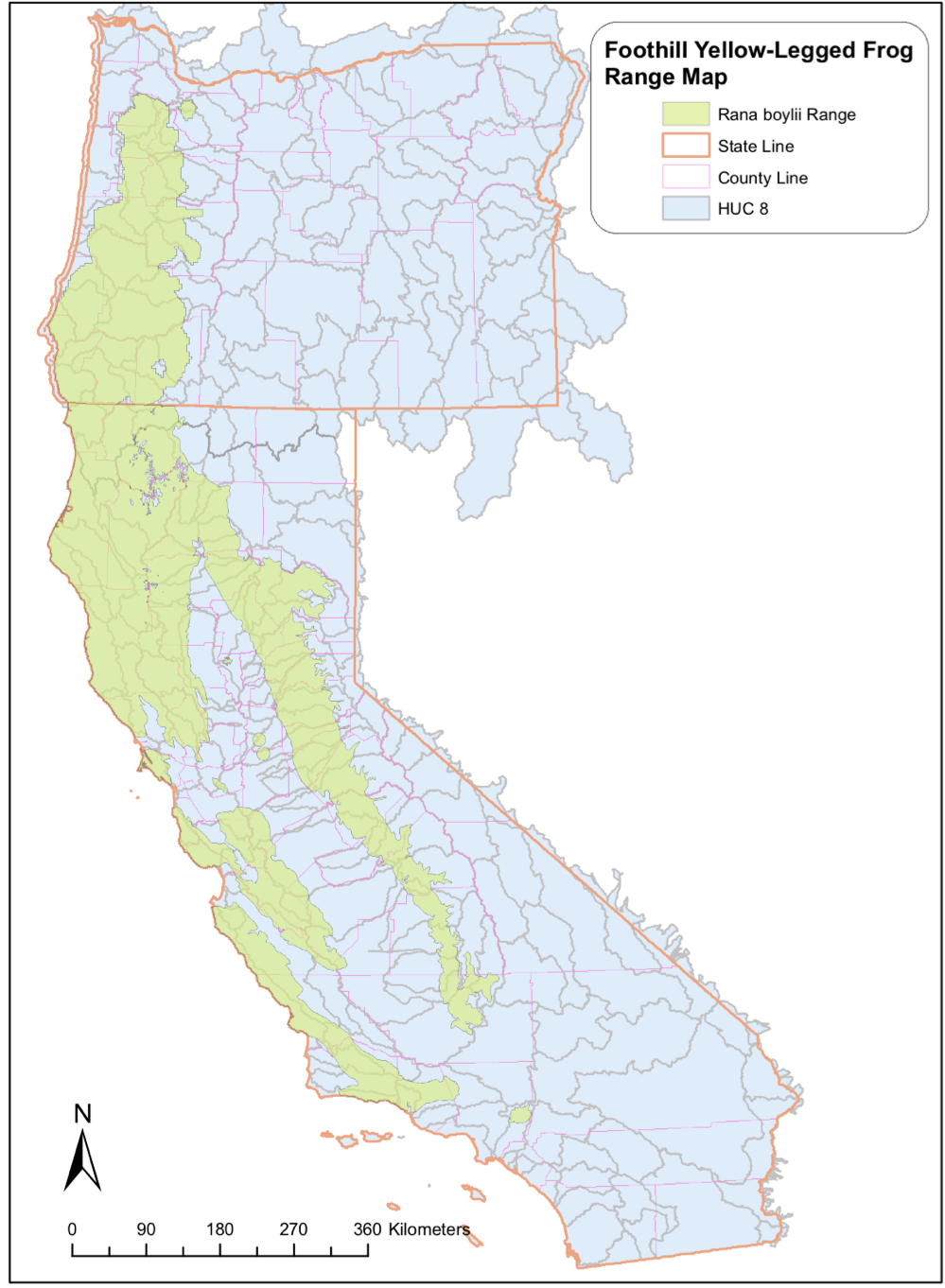
FYLF make excellent hydrologic indicators
FYLF make excellent hydrologic indicators
R. boylii strongly linked with local hydrology, and thus the hydrologic history
FYLF make excellent hydrologic indicators
R. boylii strongly linked with local hydrology, and thus the hydrologic history
Spawning timing & habitat selection is tied to receding flow cues & increasing water temperatures
90% of eggs observed in Sierras were in shallow, sheltered waters (n=147) (Bondi et al. 2013)
- < 0.67 m total depth
- < 0.15 m/s velocity
Study
Has river (flow) regulation caused genetic fragmentation in R. boylii?
Can we quantify this genetic signature for specific hydrologic flow regimes?
Study
Has river (flow) regulation caused genetic fragmentation in R. boylii?
Can we quantify this genetic signature for specific hydrologic flow regimes?
Use genome-wide methods RADSeq/RAPTURE (Ali et al. 2016)
Expect flow regulation to limit connectivity between populations, thus causing loss of genetic variation/diversity, inbreeding risk goes up and pop bottlenecks, risk of extirpation increases in small populations.
- Methods like RADSeq leverage genome-wide genetic variation to provide insight into ecological/population health
- Many amphibian species cryptic/lack data, Large genome size, assessment and monitoring hard to do
- restriction site-associated DNA sequencing, highly efficient genotyping across thousands of individual samples for targeted loci
- For frogs, can sample with non-invasive methods using mouth swabs, or tadpole tail clips
Study Area
Annual and Hourly Flows by Regulation Type
Annual and Hourly Flows by Regulation Type
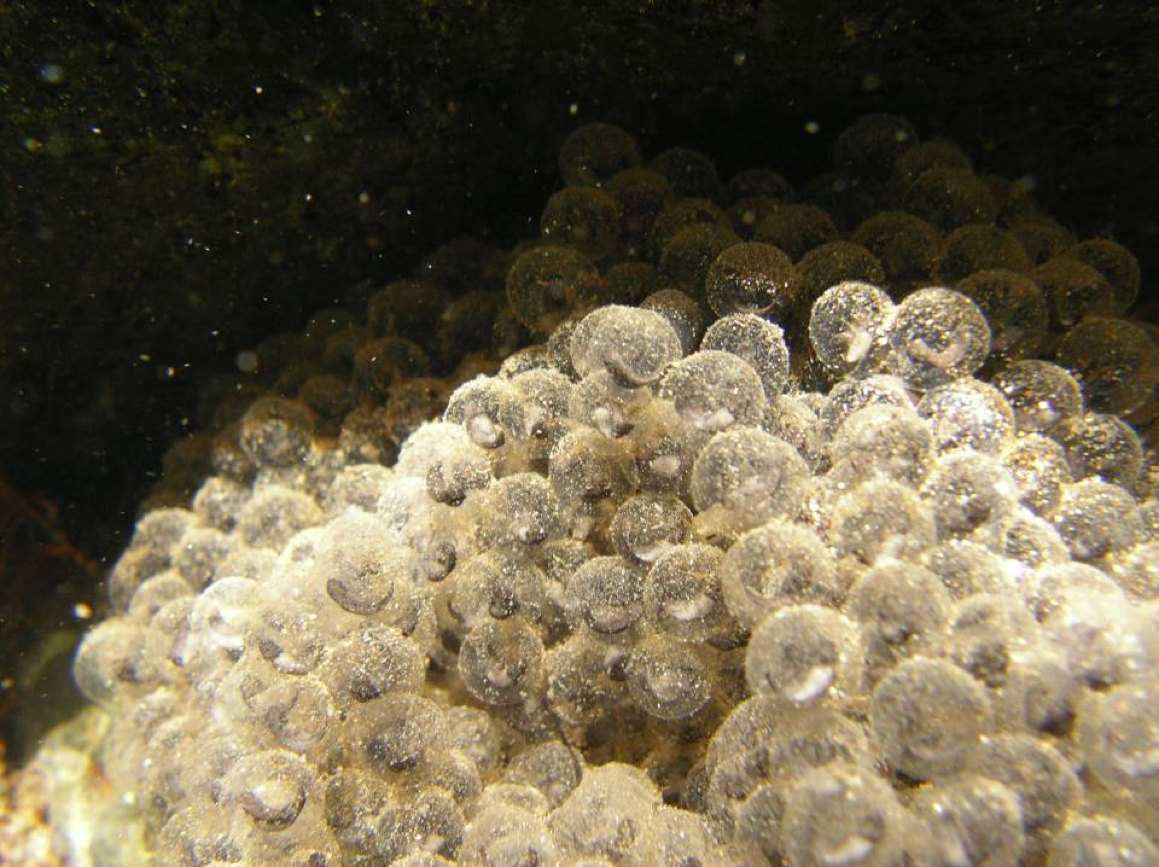
Egg Deposition Timing Matters...
Annual and Hourly Flows by Regulation Type

Egg Deposition Timing Matters...
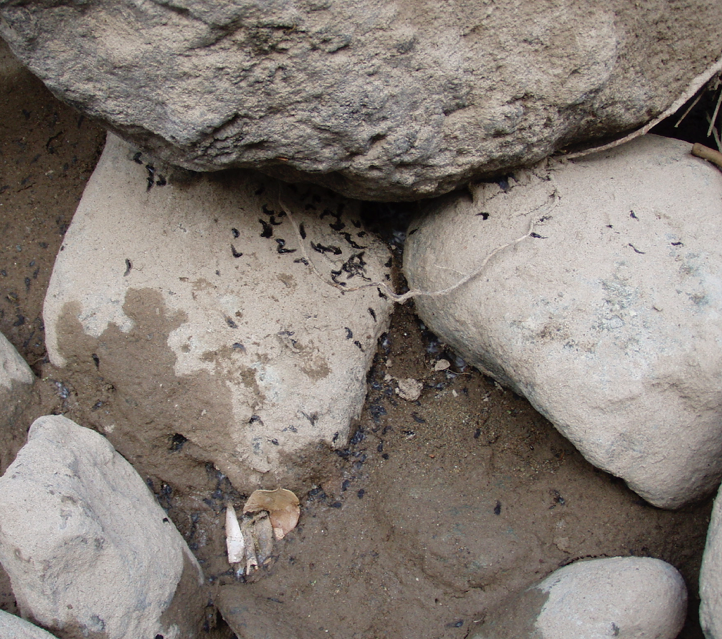
To avoid scour or dessication
These are already small populations! Mainstem may have been the source, or the highway that connected these tributary sites.
using the mean pairwise comparison value for Fst and mean river distance, so if 11 sites, approx 55 possible combinations combn(11, m = 2)
RESULTS: Anomolous genetic pattern in highly regulated MF American watershed
PCA: Northern Sierra Nevada
Why does structure matter? Indicates loss of variation, potential limited connectivity, small population sizes, isolation, divergence, etc.
PCA: Unimpaired NF American
Limited structure, greater similarity across subpops. (n=8,739 SNPs)
PCA: Regulated MF American
Hydropeaking sites in MF American are strongly divergent
Strong structure, greater divergence across subpops. (n=8,854 SNPs)
Assessing Population Connectivity using FST (Wright 1950):
a measure of population differentiation due to genetic structure
Scaled 0=(panmixis) to 1=(completely different)
Mean FST vs. River Distance
Populations in highly regulated rivers have strong genetic differentiation and evidence of bottlenecking
Evidence of Bottlenecks/Limited Genetic Variation for Impaired Flow Types
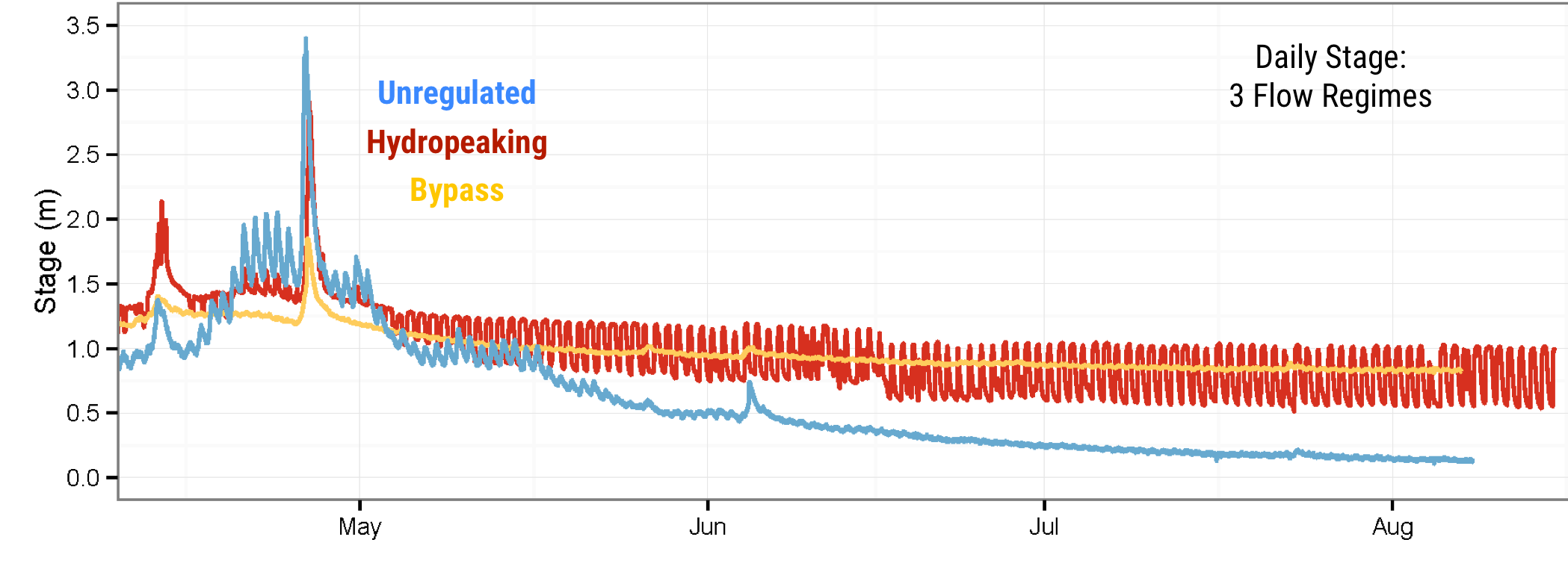
Most populations in N Sierra show pattern of bottleneck
Most populations in N Sierra show pattern of bottleneck
Greater loss of genetic diversity in regulated systems
Genetic differences between regulation types are significant. Wilcoxon rank-sum: bonferroni p<0.01
Sample sizes at 100k:
- NFA: 110 (50k=123), mainstem 36
- NFY: 18 (50k=22)
- MFY: 25 (50k=31)
- SFY: 39 (50k=49)
- MFA-Hydro: 23 (50k=37)
- FEA: 94
- BEAR: 33 (50k=49)
- NFMFA: 18 (same)
- RUB: 20 (same)
River regulation is the strongest predictor of population isolation, NOT distance!
Boosted Regression Tree Models
Summary:
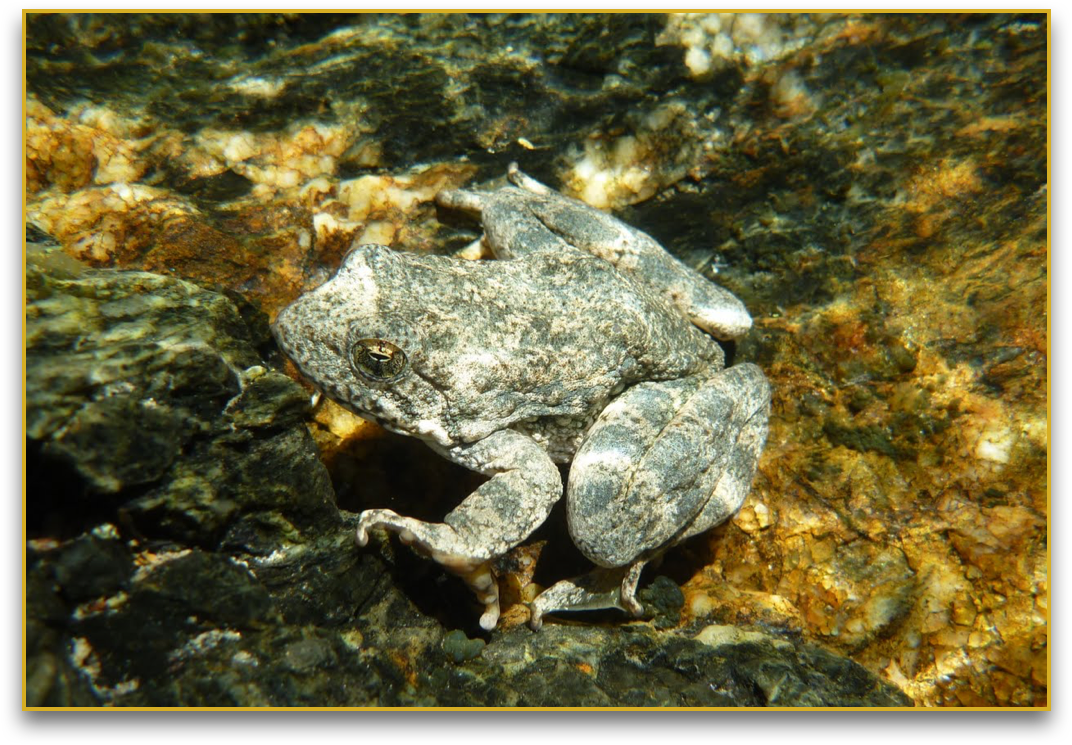
Flow alteration is having a direct impact on a hydrologically sensitive species at a genomic level
Summary:

Flow alteration is having a direct impact on a hydrologically sensitive species at a genomic level
The current population trajectory is highly concerning in Sierras
Summary:

Flow alteration is having a direct impact on a hydrologically sensitive species at a genomic level
The current population trajectory is highly concerning in Sierras
Flow management and listing distinct population segments may afford some protection...
Summary:

Flow alteration is having a direct impact on a hydrologically sensitive species at a genomic level
The current population trajectory is highly concerning in Sierras
Flow management and listing distinct population segments may afford some protection...
RAPTURE/RADSeq is a powerful & effective method
- (i.e., small pops. with limited connectivity, low diversity)
- RAPTURE/RADSeq is a powerful and effective method
- Genomics should be an integral component in assessments & monitoring in future conservation efforts
- Targeted research assessing environmental flows & ecological traits across taxa (fish, BMI, frogs)